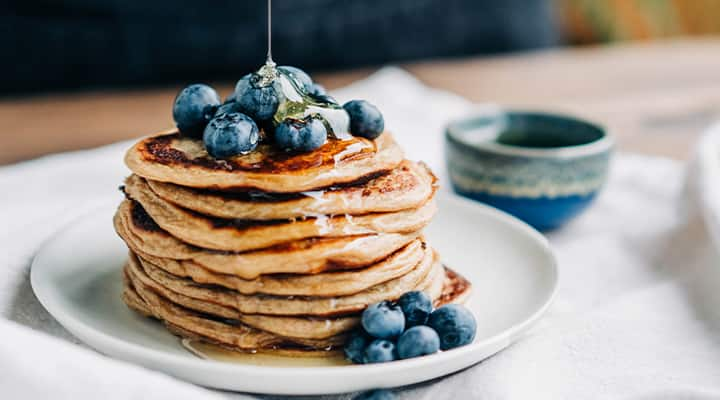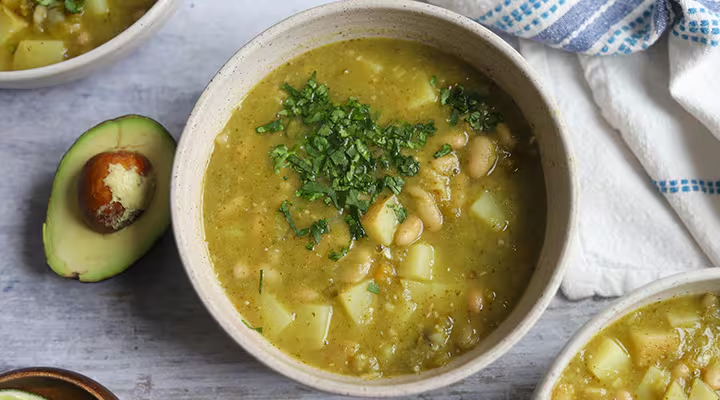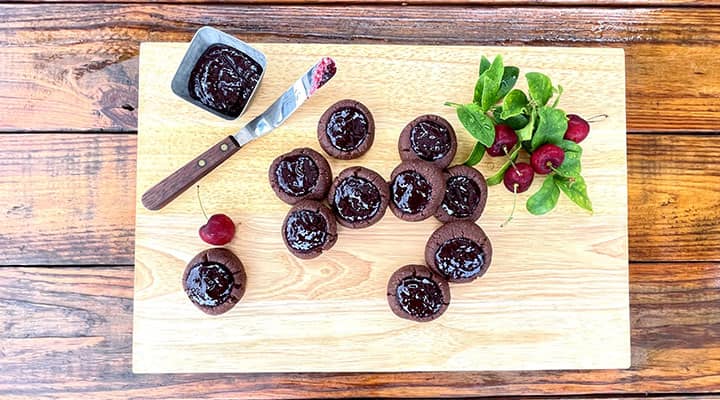
Waldorf Salad: Best Detox Recipes
Published: March 2022
It isn’t always easy to eat healthy…and enjoy every bite. But this Waldorf salad recipe makes getting your fill of healthy cruciferous vegetables both convenient and delicious. And it’s a great way to support detoxification and your liver health.
Topped with plant-based protein instead of the traditional chicken toss-in, this recipe is perfect for vegans, vegetarians, or those just looking to increase their intake of vegetables and legumes.
What is a Waldorf salad?
A Waldorf salad is composed of various veggies, fruits and nuts with a sweet and lemony mayonnaise-based dressing. Often, it contains chicken. The original Waldorf salad was named after the Waldorf-Astoria hotel in New York, where it was first created by the Swiss American restauranteur Oscar Tschirky for a charity event in 1896.
Is a Waldorf salad healthy?
The legendary chicken Waldorf recipe has graced many cookbooks and is a popular appetizer or side dish at picnic parties and more formal gatherings, but you won't find it in many healthy recipe collections, mainly because mayonnaise is a key ingredient, and raisins aren't always the best choice for people seeking to avoid dried fruit, which is higher in calories and sugar than fresh or frozen fruit.
But these ingredients can be easily swapped out for more health-promoting alternatives. In fact, with a few small tweaks, I've transformed this decadent recipe into a detox salad that supports your liver and overall health...hold the mayo!
Is a Waldorf salad a detox salad?
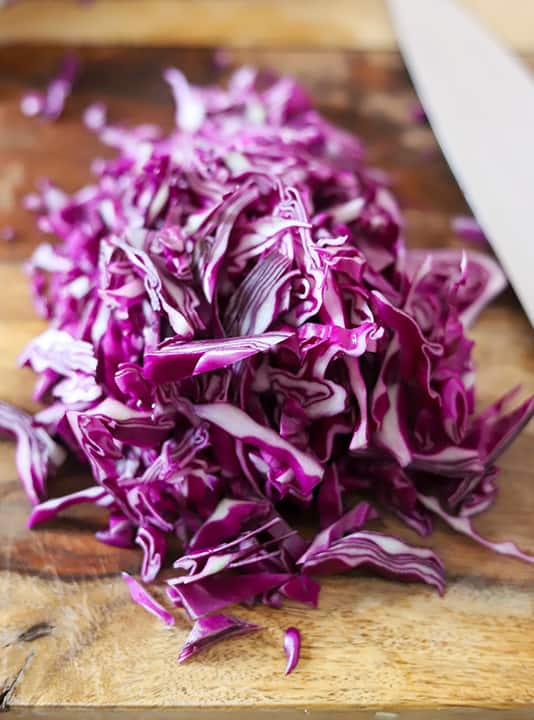
A Waldorf salad can be a detox salad depending on the ingredients. This recipe includes copious amounts of cruciferous vegetables, making it an ideal salad for detox. The bulk of this salad recipe comes from roasted cauliflower and shredded cabbage, which are excellent ingredients to support and encourage healthy detox. Cabbage and other cruciferous vegetables, such as kale, broccoli, and cauliflower, have indole-3-carbinol and sulforaphane. Those have been shown to help stimulate liver-detoxifying enzymes to flush out toxins. So adding such veggies to the recipe helps make this healthy recipe supportive of detoxification.
But the cruciferous vegetables aren't the only ingredients that support detoxification; I've also included crunchy celery and lemon juice, making this crowd-pleasing recipe the ultimate detox salad!
Of course, salad isn’t the only way to encourage your body’s natural filtering process; detox smoothies and juices are a delicious and drinkable treat.
How to make the best Waldorf salad
The best Waldorf salad starts with flavorful and fresh ingredients. Including plenty of different textures and nutritional components is ideal. This vegan Waldorf salad has elements of the original, like red-skinned grapes, apples, and celery, but replaces chicken and mayonnaise with chickpeas and non-dairy yogurt.
The salad has been bulked up with roasted cauliflower and purple cabbage and topped with walnuts, all of which are good to support your liver's detoxification process. Our Waldorf salad recipe is the best because it includes all the elements of a balanced meal: protein, healthy fats, carbs, and fiber. Healthy eating has never been so delicious!
Waldorf salad recipe
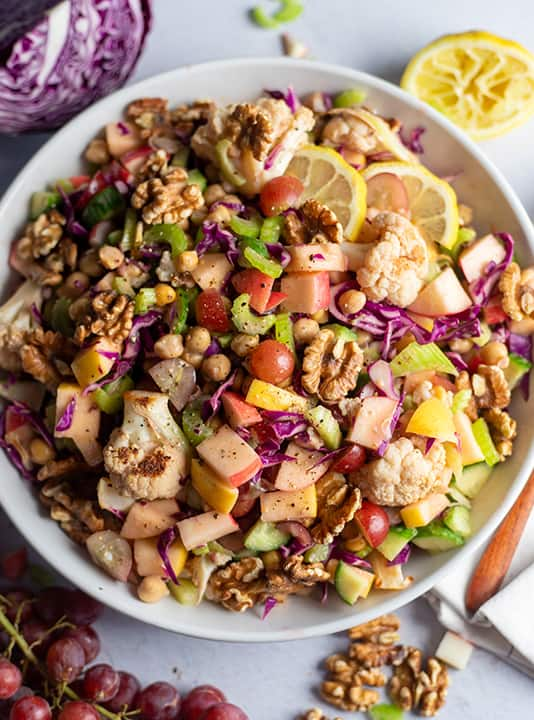
Prep time: 15 minutes
Cook time: 30 minutes
Servings: 4
Calories: 464
Ingredients
- 1 cup red grapes, halved
- 3 stalks celery, chopped
- 2 apples (2 different varieties: pink lady and opal, but you may use any available to you)
- 1 head cauliflower (about 2 cups in florets)
- 1½ cups purple cabbage, shredded
- ⅓ cup toasted walnuts
- 1 Tbsp extra virgin olive oil for roasting the cauliflower
- 15 oz chickpeas canned, rinsed and drained
- 1 cup plain plant-based yogurt (or your favorite dairy version)
- 2 lemons
- 1 Tbsp date syrup or maple syrup
- 1 pinch salt and black pepper
- 2 Persian cucumbers, diced
This salad recipe has humble ingredients but tastes like a million bucks. It has the elements of a classic Waldorf but is optimized for detox with cruciferous vegetables, dairy-free yogurt dressing and chickpeas.
Preparation
- First preheat the oven to 400 degrees Fahrenheit. Cut the cauliflower in florets and spread on a sheet pan. Spray with olive oil and sprinkle with salt and pepper. Bake for 30 minutes. Let cool.
- Toast the walnuts on a sheet pan for 6 minutes at 400 degrees Fahrenheit. Let cool.
- Core and chop the unpeeled apples in uniform cubes. Squeeze lemon over the apples and toss to prevent browning. Add to a large bowl.
- Shred the cabbage, chop the celery, halve the grapes, and add to the bowl with the apples.
- Drain the chickpeas and add to the bowl.
- When the cauliflower and walnuts are cooled, add them to the bowl with the vegetables, fruit and chickpeas.
- Separately in a small bowl, combine yogurt, lemon juice, and date syrup and mix. Add a pinch of salt and pepper, then mix until smooth.
- Pour the dressing over the salad and toss until well combined.
Nutritional Values
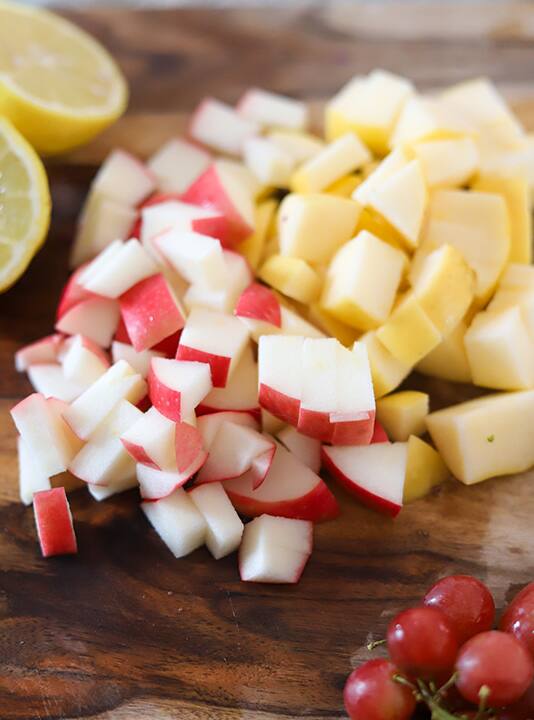
Once prepared and assembled, this salad packs a great nutritional punch:
Calories: 464
Carbohydrates: 75 g
Protein: 17 g
Fat: 15 g
Saturated Fat: 2 g
Polyunsaturated Fat: 6 g
Monounsaturated Fat: 4 g
Sodium: 105 mg
Potassium: 1238 mg
Fiber: 17 g
Sugar: 33 g
Vitamin A: 653 IU
Vitamin C: 133 mg
Calcium: 228 mg
Iron: 5 mg
All nutritional information is based on third-party calculations and is only an estimate. Each recipe and nutritional value will vary depending on the brands you use, measuring methods and portion sizes.
Explore Our Best Food & Drink Formulas
Best Waldorf salad recipe: Tips for success
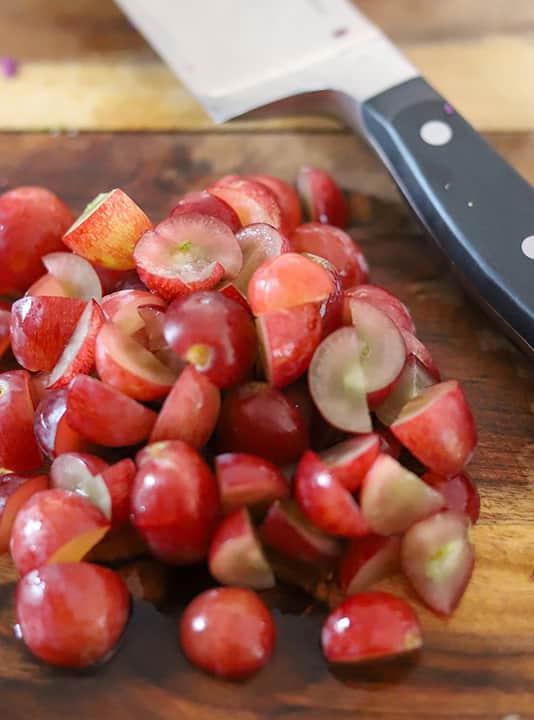
- Mix it up! Waldorf salad usually has chicken as the protein source and main ingredient, but it does not have to! For vegans, and for those of us who do not eat meat or who are trying to incorporate more plants into our diet, chickpeas are the perfect substitute. Chickpeas are full of protein and fiber and have a neutral taste like chicken. They do not overpower the recipe with their flavor. You can also add a crunchy ingredient like celery or green onions, or boost the health benefits with chopped kale. Adding fruits such as the traditional raisins or those antioxidant powerhouses, blueberries, is another way to optimize the benefits of this salad recipe. And don't forget the spices—fresh ginger or cilantro can add a kick of flavor!
- Prep ahead. This detox salad is an ideal make-ahead salad. All the elements are hardy enough to withstand being dressed and sitting for some time. This salad recipe is a great one for meal prep and will retain its quality and flavor for 2-3 days when refrigerated and covered tightly. After 3 days, the quality will be significantly diminished because the red cabbage will have released its color, and the other ingredients will have released their water, making the texture less pleasant.
- Go nuts. The wonderful thing about salad recipes is how easy they are to customize to your taste preferences. If you prefer to use a more flavorful nut than neutral-tasting walnuts, I recommend using pecans. They have a similar texture, but their flavor is more vibrant, which compliments apples and grapes.
- Dress for success. Most Waldorf salads use mayonnaise, sugar and lemon in their dressings. In this Waldorf salad recipe, we substitute yogurt (which has a similar creamy texture) because of its healthy probiotics and lower calorie count. Instead of sugar, we incorporate date syrup, which is a whole foods alternative sweetener. If date syrup is unavailable, it can be replaced by pure maple syrup in the recipe. The combination of plain plant-based yogurt, date syrup and lemon produce a sweet and tangy dressing that is both healthy and delicious, making this the best Waldorf salad dressing for your table.
- Make it a meal. This recipe is great on its own because it has such a balanced nutritional profile. It is both light and filling because of its rich fiber and protein content. For a heartier meal, this salad is great in a wrap or lettuce leaf, or on bread as a sandwich. It is also the perfect side salad to bring to a cookout or picnic to eat alongside burgers or grilled proteins. Want a healthy snack? Spread this detox salad on some celery sticks!
References
- Abdel-Salem, O et al. “Chapter 16 – Citric Acin and Antioxidant in Liver.” ScienceDirect, 2018, https://www.sciencedirect.com/science/article/pii/B9780128039519000161
- Delage, Barbara, et al. "Indole-3-Carbinol." OSU Micronutrient Information Center, January 2017, Data on file.
- Esteve, Montserrat. “Mechanisms Underlying Biological Effects of Cruciferous Glucosinolate-Derived Isothiocyanates/Indoles: A Focus on Metabolic Syndrome.” Front Nutr., September 2020, https://www.ncbi.nlm.nih.gov/labs/pmc/articles/PMC7492599/
- Kooti, W., & Daraei, N. “A Review of the Antioxidant Activity of Celery (Apium graveolens L).” Journal of evidence-based complementary & alternative medicine, July 2017. https://www.ncbi.nlm.nih.gov/labs/pmc/articles/PMC5871295/
- Martínez-González, Miguel A et al. “The Mediterranean Diet and Cardiovascular Health.” Circ Res., March 2019, https://pubmed.ncbi.nlm.nih.gov/30817261/
- Soundararajan, Prabhakaran, et al. “Anti-Carcinogenic Glucosinolates in Cruciferous Vegetables and Their Antagonistic Effects on Prevention of Cancers.” Molecules, November 2018, https://pubmed.ncbi.nlm.nih.gov/30445746/
Like what you read?
Please subscribe to get email updates on this blog.


